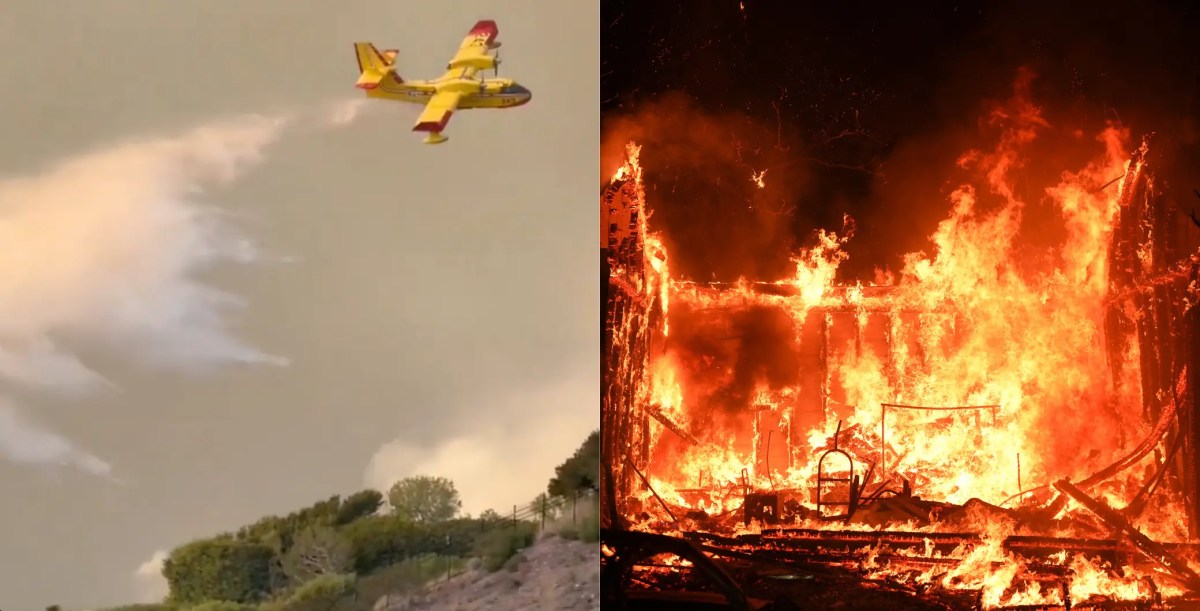Canadian Super Scooper planes are legendary aerial firefighters, known for their unique water-scooping capabilities. These aircraft, primarily the Canadair CL-215 and its successor the CL-415, have a rich history marked by technological advancements and countless successful wildfire suppression operations around the globe. This exploration delves into their operational techniques, impact, and the exciting future innovations shaping this vital firefighting technology.
From their initial design and development to their current role in combating wildfires worldwide, Super Scoopers represent a remarkable example of engineering ingenuity applied to environmental protection. We’ll examine their efficiency, the challenges they face, and their overall contribution to global wildfire management. Understanding their capabilities provides crucial insight into the ongoing fight against devastating wildfires.
Canadian Super Scoopers: Aerial Firefighting Giants: Canadian Super Scooper Plane
The Canadian Super Scooper aircraft, renowned for their unique water-scooping capabilities, represent a crucial element in global wildfire suppression efforts. These amphibious aircraft, primarily the Canadair CL-215 and its successor the CL-415, have a long and impactful history, marked by continuous technological advancements and significant contributions to combating wildfires worldwide.
History of Canadian Super Scoopers
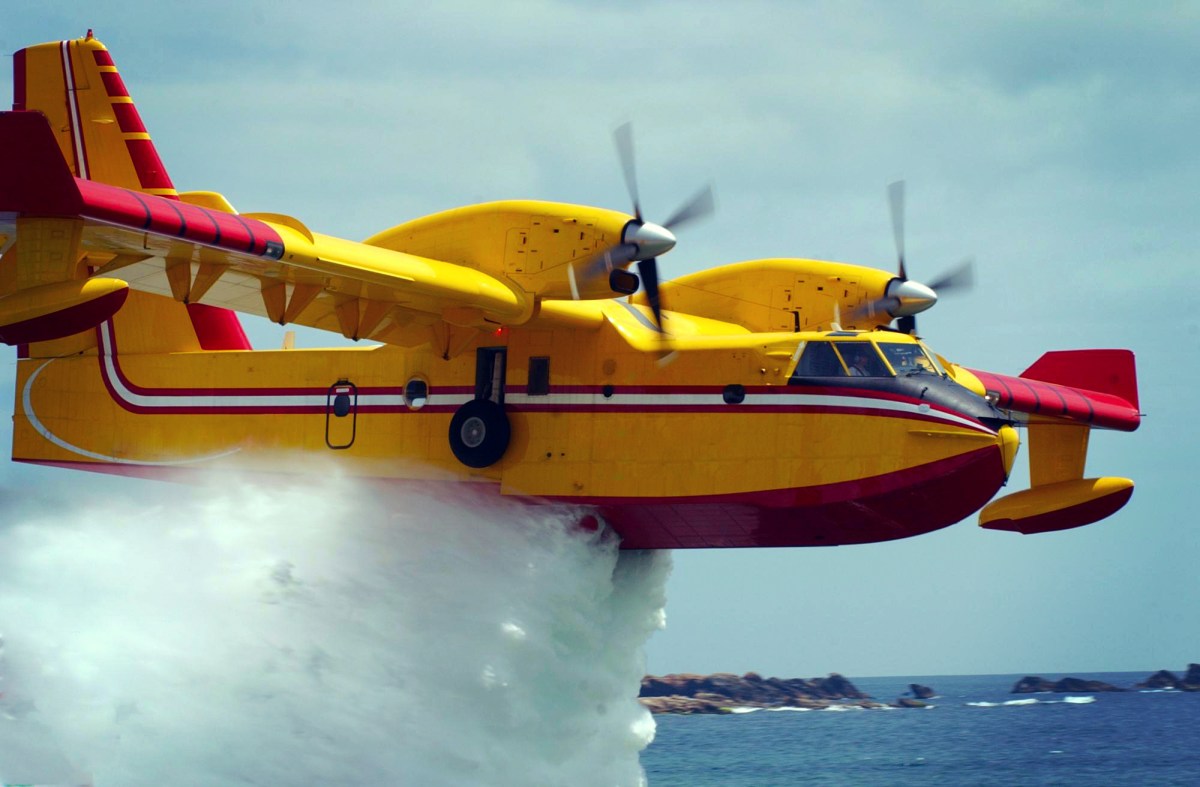
The story of the Super Scooper begins with the Canadair CL-215, first flown in 1969. This aircraft, designed specifically for aerial firefighting, quickly gained recognition for its innovative water-scooping system and robust performance. The CL-415, introduced in 1993, built upon the CL-215’s success with significant upgrades in engine power, payload capacity, and overall efficiency. These improvements resulted in a more powerful and versatile firefighting aircraft capable of tackling larger and more intense wildfires.
Significant events in their operational history include major deployments during devastating wildfires across the globe. For example, Super Scoopers played a critical role in fighting the massive wildfires in Greece, Portugal, and Australia, demonstrating their effectiveness in diverse geographical conditions. The technological advancements incorporated in each generation involved not only increased power and payload but also improvements in flight control systems, navigation, and fire-resistant materials.
| Specification | CL-215 | CL-415 |
|---|---|---|
| Payload (Water) | 1400 Gallons | 1620 Gallons |
| Maximum Speed | 215 mph | 230 mph |
| Range | 520 miles | 720 miles |
| Engine Type | Pratt & Whitney Canada PT6A-6 | Pratt & Whitney Canada PW123AF |
Operational Capabilities and Techniques
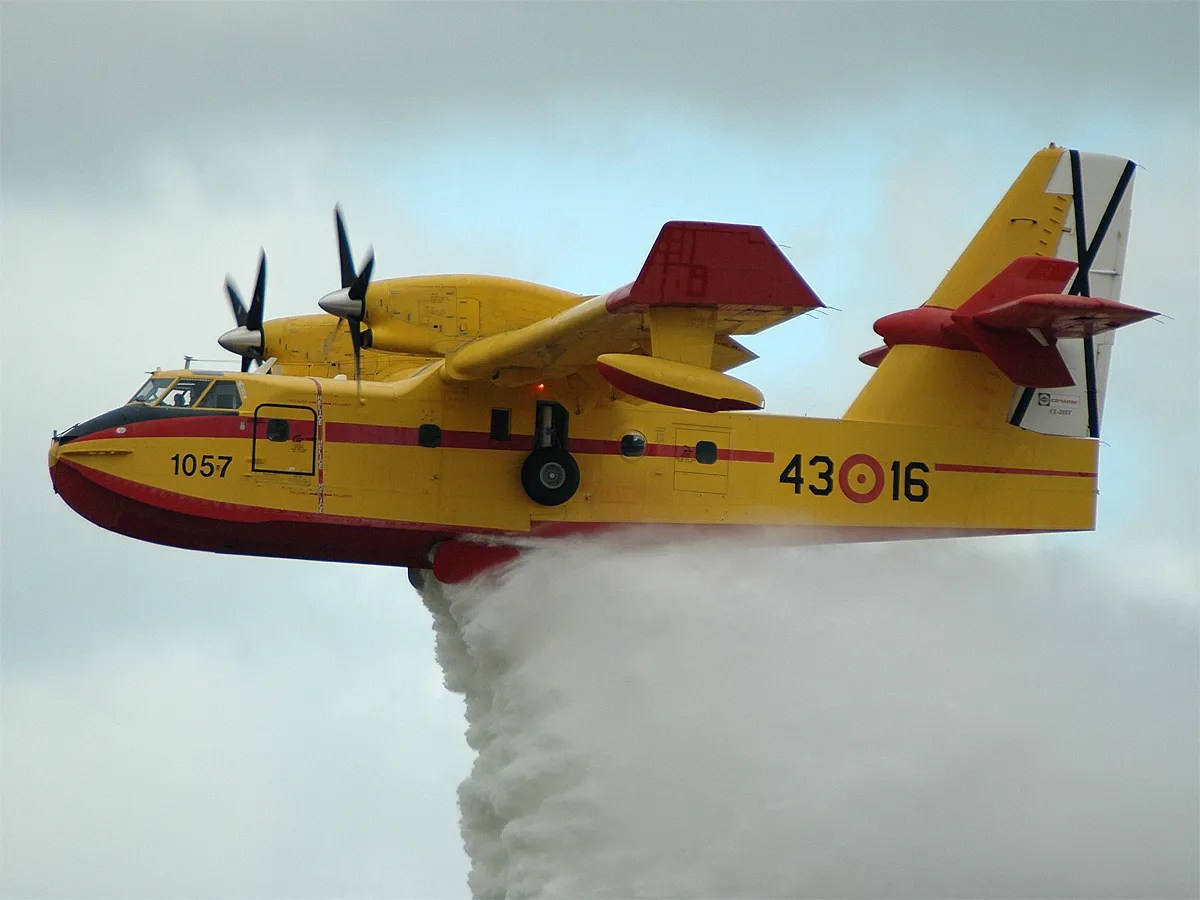
The Super Scooper’s water-scooping mechanism is a marvel of engineering. The aircraft skims the water’s surface at low speed, using a large scoop to rapidly ingest water into internal tanks. This process, incredibly efficient, allows for rapid refills, minimizing downtime between drops. Flight procedures involve a coordinated effort between pilots, ground crews, and fire managers, carefully planning drop locations and approaches to ensure maximum effectiveness and safety.
Compared to other firefighting aircraft, such as helicopters or air tankers, Super Scoopers offer a unique combination of speed, payload capacity, and amphibious capabilities. While helicopters are versatile for precision drops, Super Scoopers excel in delivering larger volumes of water quickly over a wider area. Air tankers, on the other hand, rely on pre-positioned water sources and are not as adaptable to various terrains.
Canadian Super Scoopers are awesome firefighting aircraft, known for their impressive water-scooping abilities. It’s interesting to compare their modern firefighting role to the historical impact of planes like the lancaster war plane , a bomber that played a crucial role in World War II. While vastly different in purpose, both aircraft highlight the impressive engineering and capabilities of aviation technology throughout history, showcasing how planes have adapted to serve diverse needs.
Challenges include operating in mountainous regions, adverse weather conditions (high winds, low visibility), and the availability of suitable water sources for scooping.
Impact and Significance, Canadian super scooper plane
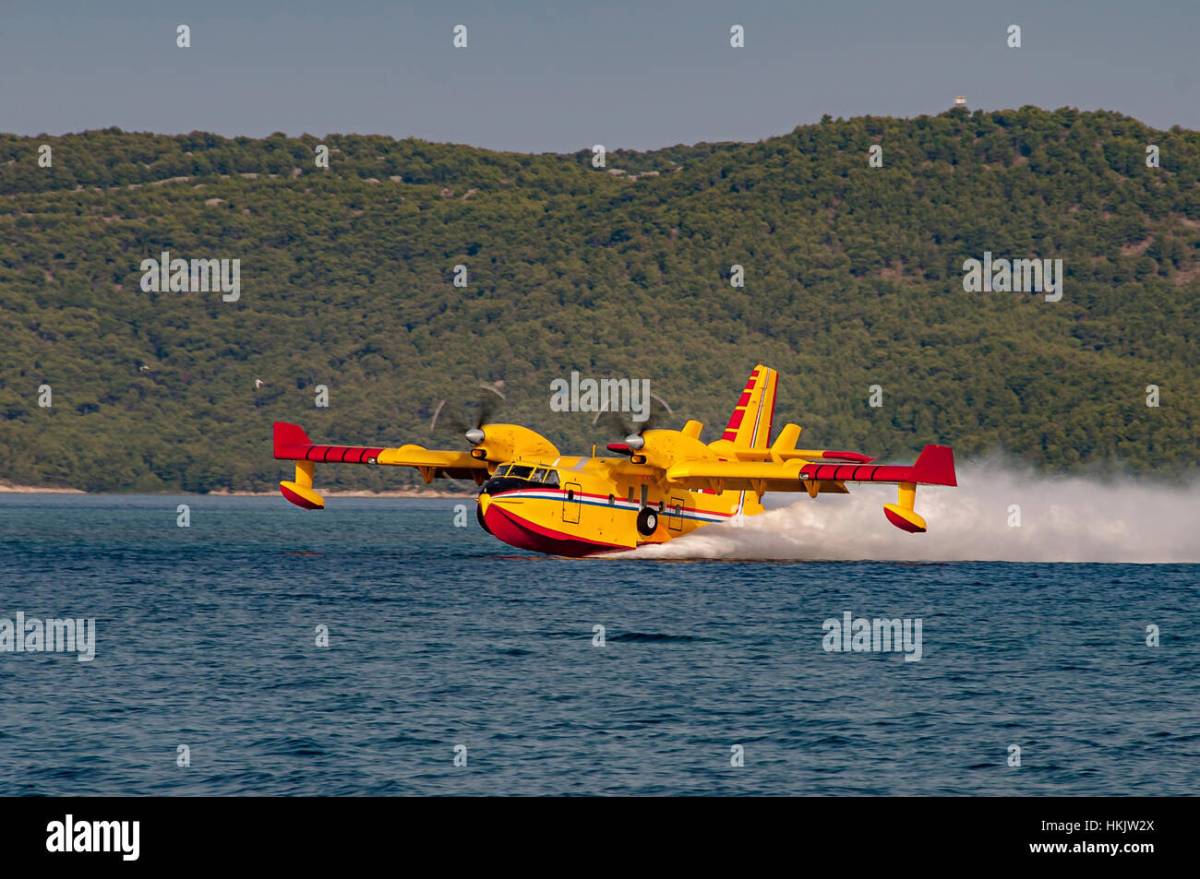
Super Scoopers have consistently demonstrated their value in wildfire suppression. Numerous successful operations have highlighted their ability to control the spread of fires, protecting lives, property, and valuable ecosystems. They are predominantly used in countries and regions with significant wildfire risks, including Canada, France, Greece, Italy, and Spain. The economic impact is substantial, as the cost of preventing significant damage from wildfires far outweighs the cost of employing these aircraft.
- Reduced property damage
- Protection of human lives
- Preservation of natural habitats
- Minimization of carbon emissions compared to ground-based firefighting methods
- Faster fire containment, leading to reduced overall fire damage
Technological Advancements and Future Developments
Ongoing research focuses on improving various aspects of Super Scooper technology. This includes enhancing the efficiency of the water-scooping system, improving fuel economy, and integrating advanced flight control systems. Future adaptations might include the use of alternative fuels or the incorporation of remote sensing capabilities for more precise fire detection and targeting.
- Improved water scoop design for faster filling and larger capacity.
- Hybrid or electric propulsion systems for increased efficiency and reduced emissions.
- Integration of advanced sensors for real-time fire mapping and analysis.
- Autonomous flight capabilities for improved safety and efficiency in hazardous conditions.
- Enhanced fire retardant delivery systems for targeted application.
Illustrative Examples
One notable deployment involved a Super Scooper in the fight against a large wildfire in Southern France in 2021. The fire, fueled by strong winds and dry conditions, threatened several villages. The Super Scooper, operating alongside other aircraft and ground crews, made numerous water drops, effectively slowing the fire’s advance and protecting crucial infrastructure. The operation highlighted the aircraft’s ability to operate effectively in challenging conditions and its vital role in collaborative firefighting efforts.
Canadian Super Scoopers are awesome firefighting aircraft, known for their impressive water-scooping abilities. It’s interesting to compare their modern firefighting role to the historical impact of planes like the lancaster war plane , a bomber that played a crucial role in World War II. While vastly different in purpose, both aircraft highlight the impressive engineering and capabilities of aviation technology throughout history, showcasing how planes have adapted to serve diverse needs.
The sight and sound of a Super Scooper in action is unforgettable. The roar of the powerful engines, the low-level flight skimming the water surface, the sight of the massive scoop engulfing tons of water in a matter of seconds—it’s a ballet of power and precision. The subsequent release of the water, a massive cascade of spray, is a spectacular demonstration of nature’s power harnessed by human ingenuity.
The aircraft’s graceful maneuvers, as it precisely positions itself for the drop, are a testament to the skill and training of its pilots.
Closure
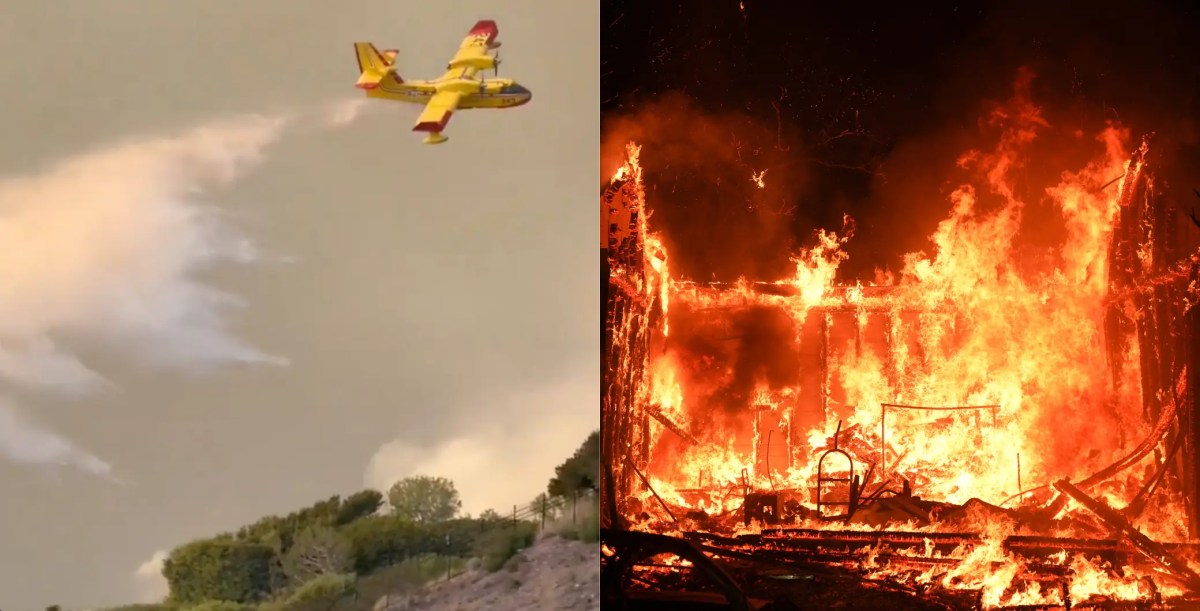
Canadian Super Scooper planes stand as a testament to human ingenuity in the face of natural disasters. Their unique water-scooping technology and proven effectiveness in wildfire suppression make them invaluable assets globally. As technology continues to advance, the future of these remarkable aircraft promises even greater efficiency and capabilities in protecting communities and ecosystems from the devastating effects of wildfires.
Their legacy extends beyond firefighting, embodying a commitment to environmental stewardship and global collaboration in disaster response.
Essential FAQs
What is the typical lifespan of a Super Scooper?
The lifespan varies depending on maintenance and usage, but it’s generally decades.
Canada’s iconic Super Scoopers are amazing firefighting aircraft, known for their massive water-scooping capabilities. These impressive planes contrast sharply with commercial airliners like the jetblue plane , which prioritize passenger transport. However, both aircraft demonstrate impressive feats of engineering and highlight the diverse applications of aviation technology. Ultimately, the Super Scooper’s role in wildfire control remains a crucial aspect of Canadian emergency response.
How much water can a CL-415 scoop at once?
A CL-415 can scoop up to 6,137 liters (1,615 gallons) of water in a single scoop.
Are Super Scoopers used only for wildfires?
While primarily used for wildfires, they can also be used for other water-dropping operations like flood relief.
What countries besides Canada operate Super Scoopers?
Many countries operate them, including France, Italy, Greece, Spain, Portugal, and the United States.
